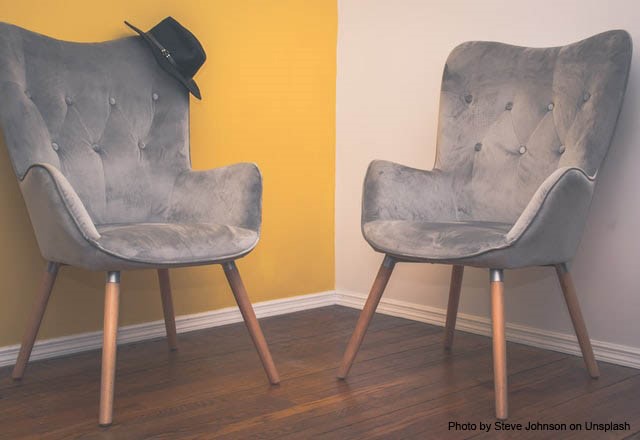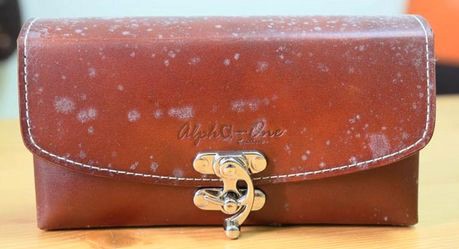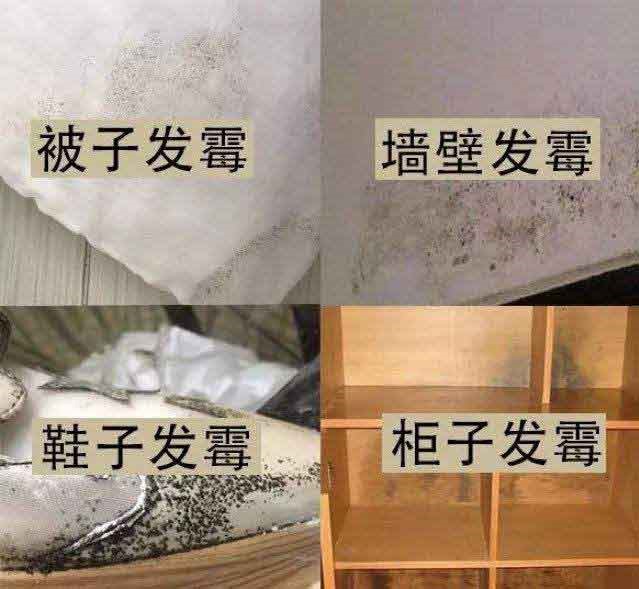Learn more about mould and mildew
What is mould and mildew?
Mould and mildew are living organisms or fragments of living things circulating in the air. They are extremely small and cannot be seen with the naked eye. Mildew is another type of fungus, similar in structure to mould. It grows in masses on surfaces of branching threads, which looks like dense spider-webs.
The threads, which produce spores are carried by air currents or by sticking to insects or animals. Active mould can be any colour, depending on what species it belongs and what it is growing on. They do not produce their own food, but absorb nutrients from dead or living organic matter.

How does mould and mildew grow?
Mould and mildew develop from spores, which are in the air all around you. As soon as spores settle in the right environment for growth, they establish colonies, which are often visible to the naked eye. These colonies are a source of more spores, which can cause unsightly stains, and may release low levels of toxic chemicals called mycotoxins into the air.
What are the sources of mould and mildew?
Mould and mildew like warmth and moderate to high humidity. You may find them in the ductwork of your heating or cooling system, in the coils of an air conditioner, humidifier reservoirs, dehumidifier drip pans, showerheads and toilets.
What measures can be taken to control mould and mildew?
First, lower the relative humidity in your home.
The humidity in your home, depends on:
- How warm or cool the air is indoors.
- How many moisture-producing activities (drying clothes indoors, showers) are taking place.
- Whether there is a constant source of moisture.
- How much moisture is being vented to the outside.
If you can keep relative humidity below 3%, you can reduce problems with mold and mildew. A hygrometer can be used to measure indoor humidity levels.
Actions that help reduce humidity
- Monitor the indoor relative humidity level with hygrometer
- Use air conditioners and/or de-humidifiers when needed
- Run the bathroom fan or open the window after showering
- Use exhaust fans or open windows whenever cooking

How can we control the causes of mould and mildew?
- Reduce relative humidity. If you find mould or mildew in your home, try to find and eliminate the source of moisture.
- Dry the air. Use a chemical or mechanical dehumidifier. Make sure you empty the collecting pan daily.
- Vent bathrooms and clothes dryers.
- Do not use humidifiers.
- Trim back trees and shrubs around the house to reduce shade.
- Remove debris from your yard, roof, and gutters.
- Clean mould and mildew growth from walls with water mixed with chlorine bleach, diluted three parts water to once part bleach. Commercial products can also remove mildew and mould. Very mouldy items should be replaced.
- Change heating and cooling system filters monthly.
- Vacuum air conditioner return covers and screens regularly.
- Check air conditioners for mould before each cooling season and have coils cleaned as needed.
- Have heating/cooling systems checked for signs of condensation especially where the system enters the house.
- Air cleaners and filters are other options. Electronic cleaners and filters are the best at removing mould and mildew dust out of the air.
- Mechanical dehumidifiers reduce humidity in basement.
- Heating/cooling contractors or duct cleaning firms can clean the ductwork in your home to reduce mould and mildew growth.
- Open shades and doors during the day allow sun and air inside.
- Wipe down the wall with a sponge or towel after a bath or shower to help them dry quickly.

How to remove mildew?
From woodwork
1. Dry wood as much as possible by using heat and increasing the air circulation.
2. Brush surface with washing soda or liquid bleach or vinegar.
3. Rinse the wood thoroughly with clean water.
4. Allow the wood to dry completely.
From wall
1. Mix 120ml of bleach to 4 litres of water.
2. Use a sponge and apply the mixture to the wall.
3. Rinse the wall with clean water.
4. Allow to dry.
From upholstery and mattress
1. Brush and remove mould from coverings.
- To prevent scattering mildew in the house, do it outdoors.
2. Draw out more mould by using a vacuum cleaner.
3. Dry the article thoroughly to prevent mould grown.
Remarks:
If mildew remains:
1. Sponge lightly with soap or detergent.
2. Clean it with a damp cloth.
- Use as little water as possible as that the under section of the item you are cleaning does not get too wet.
3. Wipe with a cloth using diluted alcohol.
4. Allow to dry thoroughly.
5. Use fungicide spray frequently.
If mould is found in inner part of the material:
- A professional hygiene company will be able to handle it.
From carpet
1. Brush or use a vacuum cleaner to remove mould from the surface of carpet.
2. Wipe with a rug shampoo, then use a damp cloth that has been soaked in clean water.
3. Allow to dry thoroughly under the sun.
4. Use fungicide spray frequently.
From leather goods
1. Wipe with mixture of 1 cup rubbing alcohol to 1 cup water.
2. Dry in a well-ventilated area
Remarks:
If mildew remains:
1. Wash with detergent, saddle soap or a soap containing a germicide or fungicide.
2. Wipe with a damp cloth.
3. Allow to try in a well-ventilated area.
From the inside of shoes contaminated with mildew:
1. Moisten a Q-tip with formaldehyde solution.
2. Swab inside of shoes thoroughly.
3. Wrap shoes tightly in a paper or plastic bag.
4. Allow formaldehyde vapours to permeate shoes for at least an hour.
5. Air them thoroughly outdoors.
Precautions
- Vapours of formaldehyde are very irritating.
- Do not inhale.
- Do not allow solution to come in contact with your skin.
From paper and books
If mildewed paper is damp:
1. Dry I in a well-ventilated area.
2. Use a clean soft cloth to remove any dry loose mould.
If mildewed paper is washable:
1. Wipe it with a cloth thick with soap-suds.
2. Wipe with lean water.
- Be careful not to wet the paper any more than necessary.
- Do not rub the affected area.
Remarks:
If stains remain:
1. Bleach with a household bleach solution.
2. Sponge with a wet cloth.
If books are very damp
1. Spread pages of books out fan-wise to air.
2. Sprinkle cornstarch or talcum powder between pages to absorb moisture.
3. Leave for several hours.
4. Brush off.

How do I know if the remediation or cleanup is successfully finished?
1. Visual inspection/white glove test
- Visible mold and moldy odors should not be present.
- The treated areas should show no signs of water damage or mold growth.
2. Moisture measurements
3. Air Sampling
- Verify via a post remediation verification airborne mold testing.
